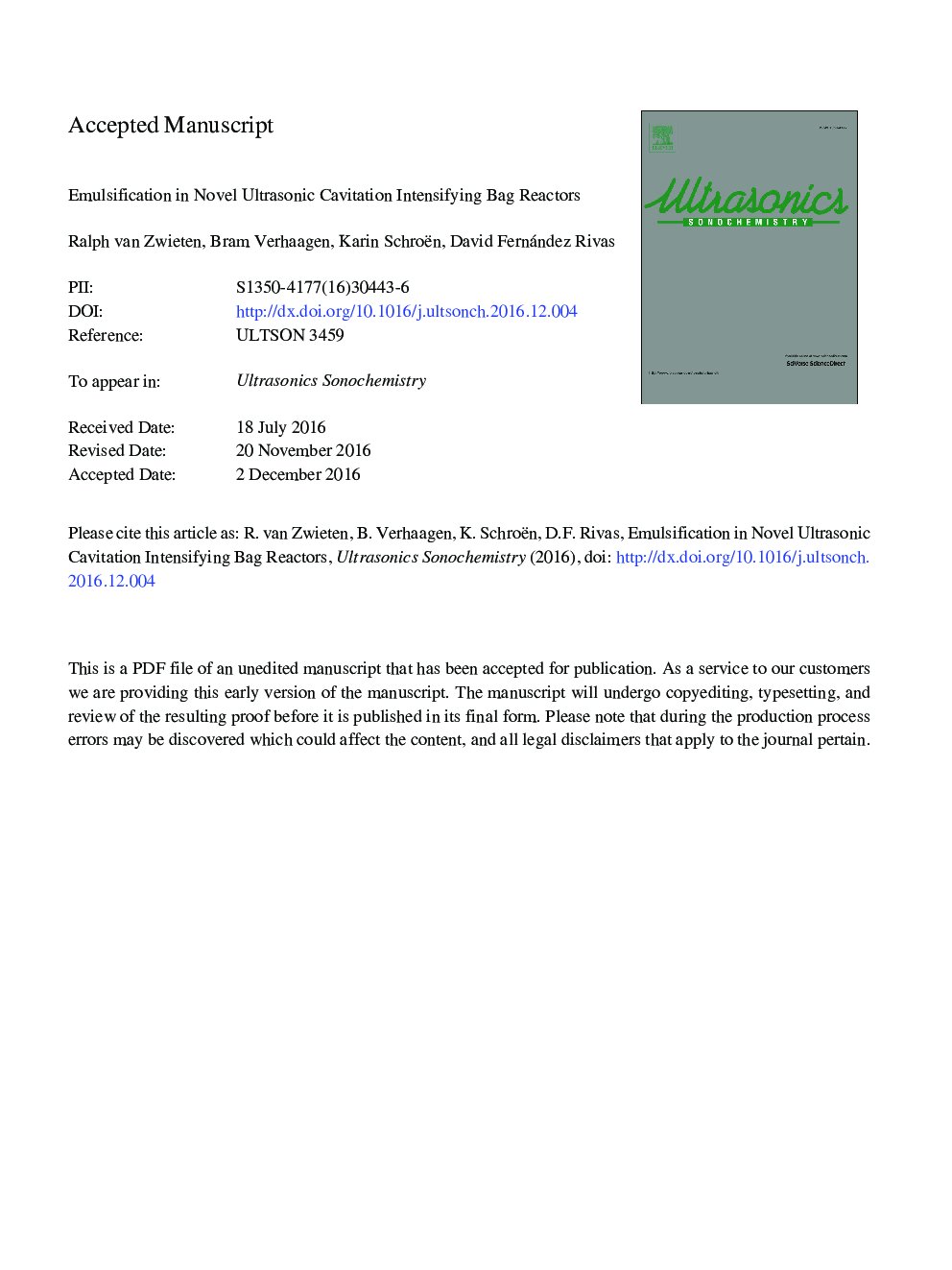| Article ID | Journal | Published Year | Pages | File Type |
|---|---|---|---|---|
| 5144765 | Ultrasonics Sonochemistry | 2017 | 17 Pages |
Abstract
Cavitation Intensifying Bags (CIBs), a novel reactor type for use with ultrasound, have been recently proposed as a scaled-up microreactor with increased energy efficiencies. We now report on the use of the CIBs for the preparation of emulsions out of hexadecane and an SDS aqueous solution. The CIBs have been designed in such a way that cavitation effects created by the ultrasound are increased. It was found that the CIBs were 60 times more effective in breaking up droplets than conventional bags, therewith showing a proof of principle for the CIBs for the preparation of emulsions. Droplets of 0.2 μm could easily be obtained. To our knowledge, no other technology results in the same droplet size more easily in terms of energy usage. Without depending on the wettability changes of the membrane, the CIBs score similarly as membrane emulsification, which is the most energy friendly emulsification method known in literature. Out of the frequencies used, 37 kHz was found to require the lowest treatment time. The treatment time decreased at higher temperatures. While the energy usage in the current non-optimised experiments was on the order of 107-109J/m3, which is comparable to that of a high-pressure homogenizer, we expect that the use of CIBs for the preparation of fine emulsions can still be improved considerably. The process presented can be applied for other uses such as water treatment, synthesis of nanomaterials and food processing.
Related Topics
Physical Sciences and Engineering
Chemistry
Chemistry (General)
Authors
Ralph van Zwieten, Bram Verhaagen, Karin Schroën, David Fernández Rivas,
